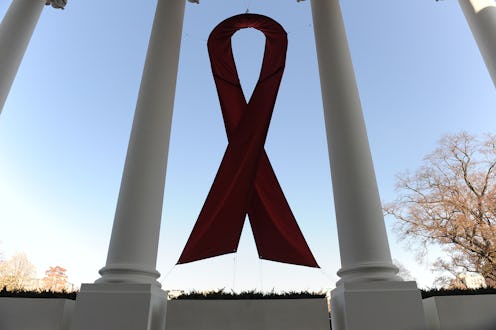News
Report: Iran HIV/AIDS Cases Up By Crazy Amount
On December 1st of each year, World AIDS Day is celebrated in order to raise awareness about — and lessen the stigmatization of — HIV/AIDS in our society. Although the last few months have seen some remarkably positive changes — such as a global decline in HIV cases; a child being born with the disease who seems to be in remission thanks to a possible ‘functional cure,’ and even a possible HIV vaccine — the news isn't great everywhere. On Sunday, Iranian state television reported that the number of HIV-positive people has gone up by an astounding 80 percent annually over the last ten years.
According to Iranian Health Minister Hassan Ghzaizadeh, the last decade has seen a nine-fold increase in the number of HIV/AIDS patients in the country. As it stands, the number of registered HIV-positive people in Iran is roughly 27,000, although the number of people infected is estimated to be much higher — more like 100,000. Of those, only a third got the virus through sex; two-thirds contracted the infection through using syringes.
The news doesn't come as a shock to Iranian authorities: since last year, officials have been warning of a "third wave" of HIV infections. The situation is complex: while there is evidence of improvement in the government's attitude towards education and outreach about HIV and AIDS, it remains highly stigmatized in the religious country. General knowledge about how to prevent its spread is still relatively low, and often what educational programs are offered, aren't directed at those who are more likely to engage in high-risk behavior. This, along with an increasingly young sexually active population, has of course heightened the risk of infection across the country, and many suspect the figures may be even higher than reported.
As a member of Iran's Alborz Council for Support and Assistance wrote for France 24:
With this third wave of HIV, people need to be taught from a young age how to prevent spreading the virus. During President Mohammad Khatami’s term, there were posters at high schools warning about risky sexual activities and methods of preventing HIV. This was discontinued under President Mahmoud Ahmadinejad. So far, in the three months since President Hassan Rohani has taken office, nothing has changed.
Every time we have tried to give information about HIV and AIDs in high schools, we were told that we were giving the students too much information [about sex]. This is while the age at which people start having sex in Iran keeps decreasing. According to a recent survey, 40 percent of boys and girls have had sexual relations before age 18. Of those, 40 percent started having sex before age 14.
At a high school in the low-income neighborhoods of Karaj, we asked a teacher to bring to one side any girl with questions about sex, so that we could speak to them openly and teach them how to use condoms. But the school wouldn’t let her. At this same high school, all 1,500 female students were tested for HIV and 19 tested positive.
Still, the last decade has seen signs of incredible improvement in other parts of the world, especially in sub-Saharan Africa. Recent reports have shown that in Rwanda — a state about the size of Rhode Island, which has over 200,000 HIV-positive residents — 83 percent of those infected with HIV have successfully suppressed the virus; more than double the success rate for patients in the U.S. Over 7.5 million people in Sub-Saharn Africa are receiving antiretroviral therapy, over a hundred times more than there were ten years ago — more than ninety percent now have access to life-saving treatment.
Most positively, the number of new HIV cases in Rwanda has fallen by roughly 50 percent over the last ten years, thanks to the HIV-testing of pregnant women, which has largely eliminated the transmission of the virus from mothers to their newborns. By contrast, in Iran, 700 children still become infected with the virus daily — ninety percent of those infections happen via mother-to-child transmissions.
